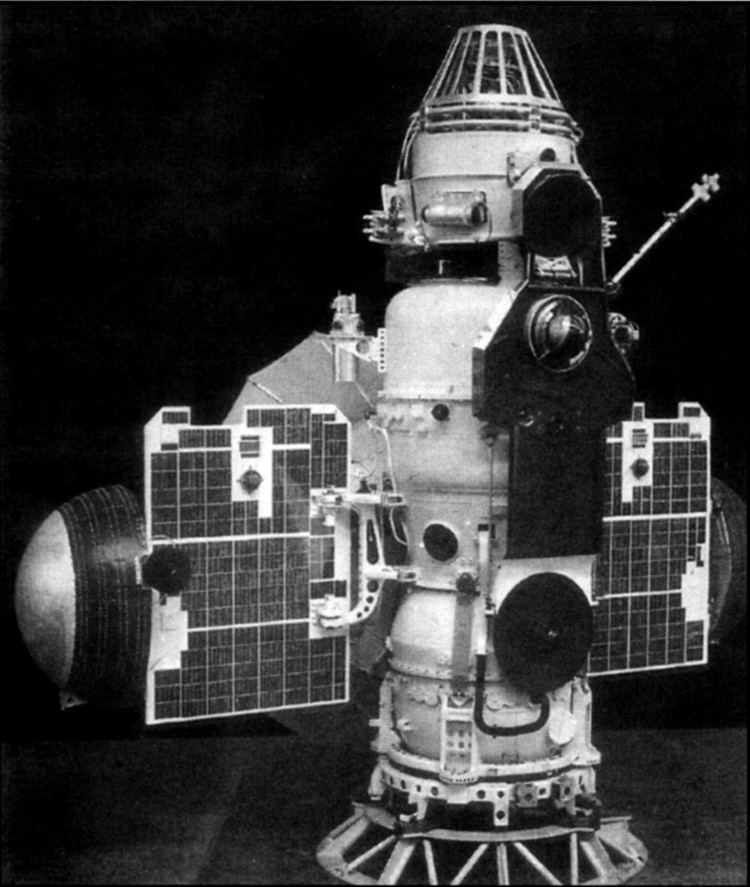SATCAT no. 1730 Manufacturer OKB-1 Apogee 315,000 m Spacecraft 3MV-4 No.4 | COSPAR ID 1965-091A Mission duration 3 months and 15 days Period 1.5 hours Inclination 51.8° Start date November 12, 1965 | |
 | ||
Launch mass 963 kilograms (2,123 lb) Operator S. P. Korolev Rocket and Space Corporation Energia | ||
Kart mastroianni 05 03 2017 santa venera 2
Venera 2 (Russian: Венера-2 meaning Venus 2), also known as 3MV-4 No.4 was a Soviet spacecraft intended to explore Venus. A 3MV-4 spacecraft launched as part of the Venera programme, it failed to return data after flying past Venus.
Contents
Venera 2 was launched by a Molniya carrier rocket, flying from Site 31/6 at the Baikonur Cosmodrome. The launch occurred at 05:02 UTC on 12 November 1965, with the first three stages placing the spacecraft and Blok-L upper stage into a low Earth parking orbit before the Blok-L fired to propel Venera 2 into heliocentric orbit bound for Venus.
The Venera 2 spacecraft was equipped with cameras, as well as a magnetometer, solar and cosmic x-ray detectors, piezoelectric detectors, ion traps, a Geiger counter and receivers to measure cosmic radio emissions. The spacecraft made its closest approach to Venus at 02:52 UTC on 27 February 1966, at a distance of 24,000 kilometres (15,000 mi).
During the flyby, all of Venera 2's instruments were activated, requiring that radio contact with the spacecraft be suspended. The probe was to have stored data using onboard recorders, and then transmitted it to Earth once contact was restored. Following the flyby the spacecraft failed to reestablish communications with the ground. It was declared lost on 4 March. An investigation into the failure determined that the spacecraft had overheated due to a radiator malfunction.
